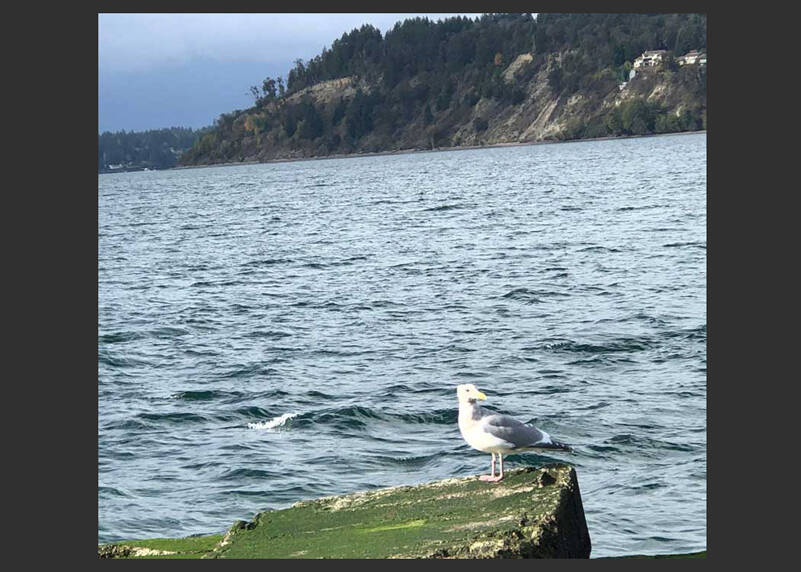By Morf Morford, Tacoma Daily Index
Those of us who spend most of our time on land have become accustomed to invasive species that seem to have taken over our landscapes, yards and roadways.
Scotch Broom (Cytisus scoparius), English Ivy and blackberries are the most obvious in just about every corner of Western Washington.
You can see a map of Scotch Broom distribution here.
Invasive species matter for several reasons; they displace native species, disrupt surrounding ecosystems and those creatures who have depended on it, and, perhaps most of all, they just don’t belong there.
It’s in the water
Our waterways also have invasive species. One of the worst is the European green crab (Carcinus maenas) which is a globally damaging invasive species that poses a threat to native shellfish, eelgrass, and estuary habitat which are all essential for salmon and many other species.
European green crabs have been able to establish large populations in some areas, and their presence has had dramatic impacts on other species, particularly smaller shore crabs, clams, and small oysters.
Green crabs cannot crack the shell of mature oysters, but they can prey upon young oysters, and will dig down six inches to find clams to eat.
One green crab can consume 40 half-inch clams a day, as well as other crabs its own size. Their digging can also have significant negative impacts on eelgrass, estuary and marsh habitats.
Here are some recommendations from the Washington Department of Fish and Wildlife website:
If you find a suspected European green crab or its shell in Washington, report it as soon as possible using the form on this web page. Download the Crab Identification Guide and take pictures to confirm identification. At this time, we are not asking the public to kill suspected green crabs. This may sound counter intuitive but is intended to protect native crabs from cases of mistaken identity. As a Prohibited species, it is illegal to possess a live European green crab in Washington.
Wild Washington Lesson Plans
If you have any working teachers in your life, you might want to pass along this guide to lesson plans for all things biological, natural, even wild, in Washington state.
These lesson plans are themed around the state’s diverse flora and fauna.
Wild Washington lessons are designed to equip K-12 students with the knowledge, social, and emotional skills needed to think critically and solve problems wrapped around or involving natural resource issues. A wide range of activities encourage students to explore various points of view and collaborate with others to find ways to move forward on real-world challenges.
Besides official school settings, unofficial and family groups can pick up some guidelines on issues as diverse as birding, backyard habitat, wildlife life cycles, threatened and endangered species, and, of course, land or water based invasive species.
Volunteer opportunities in the wild
If you, or someone in your circle of friends and family wants to encounter natures or any aspect of the local ecosystem, the Washington Department of Fish and Wildlife welcomes volunteers who want to assist in activities that benefit fish, wildlife and habitat. And you just might learn something along the way.
A variety of volunteer opportunities are available, including projects on state wildlife areas, water access sites, furthering conservation activities and hunter education through the Master Hunter program, and local projects that benefit salmon recovery through Regional Fishery Enhancement Groups.
Volunteers who work 24 hours on agency-approved projects may be eligible to earn a complimentary annual Discover Pass. For more information about how to qualify for a complimentary pass, visit the Discover Pass website.
And if you are interested in volunteering for bird/wildlife rescue or rehabilitation during an oil spill response, please register through the Washington Department of Ecology’s website.
Be sure to register ahead of time – emergencies are, after all, unpredictable.
To keep on top of Washington Department of Fish and Wildlife activities and events, take a look at their calendar here.
Habitat at Home
If you think that you have to drive an hour or two to find natural habitats, you might want to connect with Habitat at Home. Formerly known as the Backyard Wildlife Sanctuary Program, Habitat at Home is the Washington Department of Fish and Wildlife’s effort to encourage Washingtonians to connect with nature where they live.
These resources will help you discover fun and effective ways you can help support wildlife, regardless of your expertise, how much space you have, or where you live.
Habitat fragmentation impacts all of us in ways few of us recognize or acknowledge. You can find details, and maybe a bit of inspiration here.





